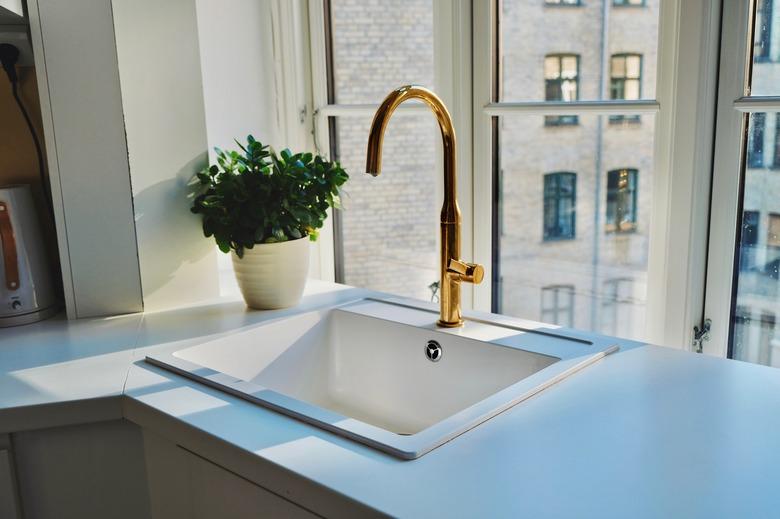How To Repaint An Enamel Kitchen Sink
The enamel surface on a kitchen sink covers a metal with a ceramic layer. Enamel tends to be durable, but over time it can start to show signs of wear and tear. Once this happens, your entire kitchen may look worn. If replacing the sink is not in the budget, one cost-effective approach to breathing new life into an enamel sink is to repaint it.
Prepare the Sink for Enamel Paint
Proper prep is the key to a successful paint job for the sink. Wash the surface of the sink thoroughly with soapy water. Use a scrub brush on stained areas or stuck-on debris. Rinse well with water to remove soap residue.
Next, wipe down the inside of the sink with a clean, dry towel. Rub denatured alcohol over the surface to evaporate any remaining water. Cover the fixtures with a plastic bag and apply painter's tape anywhere the sink meets a wall or cabinet. Pry off any caulking around the sink, using the putty knife.
Fix Any Damaged Areas
If the sink has any minor damage, now is the time to fill in any chips or cracks in the sink to create a smooth surface. Larger cracks that potentially affect the structural integrity of the sink may need to be addressed by a professional, which can increase the overall porcelain sink refinishing cost but will ultimately yield the best results.
Fill in small nicks and scratches with a porcelain repair product or fiberglass putty. Allow the filling to cure, then sand it down until repaired areas are flush with the enamel surface on the sink. Wipe out the inside of the sink with damp paper towels to remove dust.
Once the sink has been scrubbed and repaired, check the sink one more time for dust or grime. If the sink doesn't feel completely smooth, the sink enamel paint won't bond as well to the surface, leading to poor performance and a shorter lifespan of your reporcelain sink.
Time to Start Painting
Before you start applying any products from your kitchen sink paint kit, read the directions on the primer and paint in order to familiarize yourself with the proper technique. Follow all safety precautions, such as opening windows and turning on exhaust fans for ventilation. Wear safety gloves if necessary when applying chemicals.
Apply a bonding primer to the sink with a paint-on or spray product like Rustoleum sink paint. Let the primer dry for the recommended time in the instructions before moving on to the actual sink paint. Then, you can paint one coat of latex or ceramic paint and let it dry. Add a second coat to improve the overall performance and lifespan of the paint.
It's critical to not use the sink until the paint has dried. Exposing the paint to water before it has completely dried will ruin all of your hard work.
Applying the Finishing Touches
If you notice any splatters on the walls, countertops or cabinets, clean them up immediately with paper towels. Dried-on splatters can be removed with a commercial product like Krud Kutter, Goof Off or Goo Gone.
Finish up by removing the painter's tape and protective plastic from the fixtures. Add a new layer of caulking around the edge of the sink. Once the caulk and paint have dried completely, the sink is ready to use as usual.
